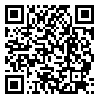Volume 5, Issue 2 (April 2021)
AOH 2021, 5(2): 1012-1021 |
Back to browse issues page
Download citation:
BibTeX | RIS | EndNote | Medlars | ProCite | Reference Manager | RefWorks
Send citation to:



BibTeX | RIS | EndNote | Medlars | ProCite | Reference Manager | RefWorks
Send citation to:
Mehri H, Sepahi-Zoeram F, Karimi A, Golbabaei F. Presenting a Method for Evaluating the Safety Risk Management Process in Industries Using Fuzzy Logic Approach. AOH 2021; 5 (2) :1012-1021
URL: http://aoh.ssu.ac.ir/article-1-158-en.html
URL: http://aoh.ssu.ac.ir/article-1-158-en.html
1- Instructor, Department of Occupational Health Engineering, School of Public Health, North Khorasan University of Medical Sciences, Bojnurd, Iran
2- MSc, Occupational Health Research Center, School of Public Health, Shahid Sadoughi University of Medical Sciences, Yazd, Iran
3- Department of Occupational health, School of Public Health, Tehran University of Medical Sciences, Tehran, Iran ,a_karimi@sina.tums.ac.ir
4- Department of Occupational health, School of Public Health, Tehran University of Medical Sciences, Tehran, Iran
2- MSc, Occupational Health Research Center, School of Public Health, Shahid Sadoughi University of Medical Sciences, Yazd, Iran
3- Department of Occupational health, School of Public Health, Tehran University of Medical Sciences, Tehran, Iran ,
4- Department of Occupational health, School of Public Health, Tehran University of Medical Sciences, Tehran, Iran
Abstract: (1552 Views)
Background: An effective process for preventing industrial accidents basically requires a thorough study of the environment, data collection, evaluation, and analysis of this information, determination of corrective action, and its implementation. Risk management provides an integrated framework for this important process. The purpose of this study was to identify the parameters of the risk management process, combine these parameters by fuzzy logic and construct a fuzzy model to obtain the risk management index and finally design a questionnaire with Likert scale to obtain the inputs of this model to evaluate the risk management process. Methods: This descriptive cross-sectional study was conducted in 2018 in Tehran. First, based on library studies and experts' opinions, Jaques non-linear crisis management model was selected, and based on this model, the parameters of the risk management process were extracted. Then, a questionnaire with 22 questions was designed to measure these parameters, the content and face validity of which were evaluated. Also, to evaluate the reliability of the questionnaire, the test-retest method and Cronbach's alpha coefficient were used. Then the parameters were defined as fuzzy numbers, the Fuzzy inference engine was programmed using fuzzy rules, and its validity was evaluated. Results: The fuzzy model has three stages, in each of which sixteen rules are used. In this fuzzy model, the defuzzification step was performed by four methods with the same results. The designed questionnaire contains twenty-two questions, the content validity ratio (CVR) for this questionnaire is 0.89, and the content validity index (CVI) for all questions was above 0.79. Cronbach's alpha coefficient for this questionnaire was 0.713. Face validity was determined quantitatively by calculating the impact score (more than 1.5). Using intraclass correlation coefficient and Pearson correlation coefficient, the existence of reliability between test times (test-retest) was confirmed, so that their values were 0.84 and 0.88%, respectively. Conclusion: The proposed fuzzy model has a high validity giving a correct evaluation of the risk management process and expressing the final result in the form of an index between zero and one hundred. The risk management process evaluation questionnaire has good validity and reliability with the interpretation that the item has good face validity and is understandable, simple, and fluent for the sample group. Using this tool, industry managers can evaluate the safety risk management process, making them able to identify the strengths and weaknesses of this process, and finally take steps to eliminate the defects and improve this process continuously.
Keywords: Questionnaire design, Risk identification, Risk prioritization, MATLAB Software, Validity, Reliability
Type of Study: Research |
Subject:
Special
Received: 2019/01/26 | Accepted: 2021/04/9 | Published: 2021/04/9
Received: 2019/01/26 | Accepted: 2021/04/9 | Published: 2021/04/9
Send email to the article author
| Rights and permissions | |
 |
This work is licensed under a Creative Commons Attribution-NonCommercial 4.0 International License. |







